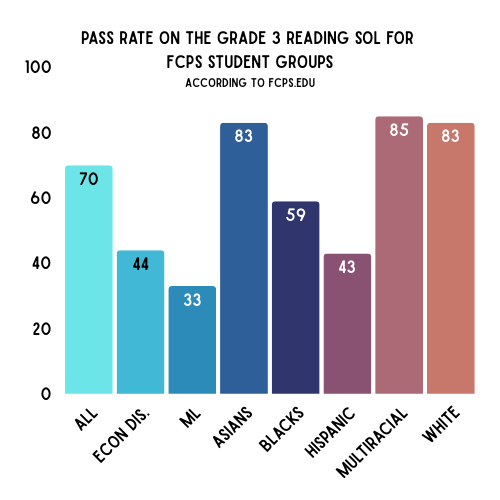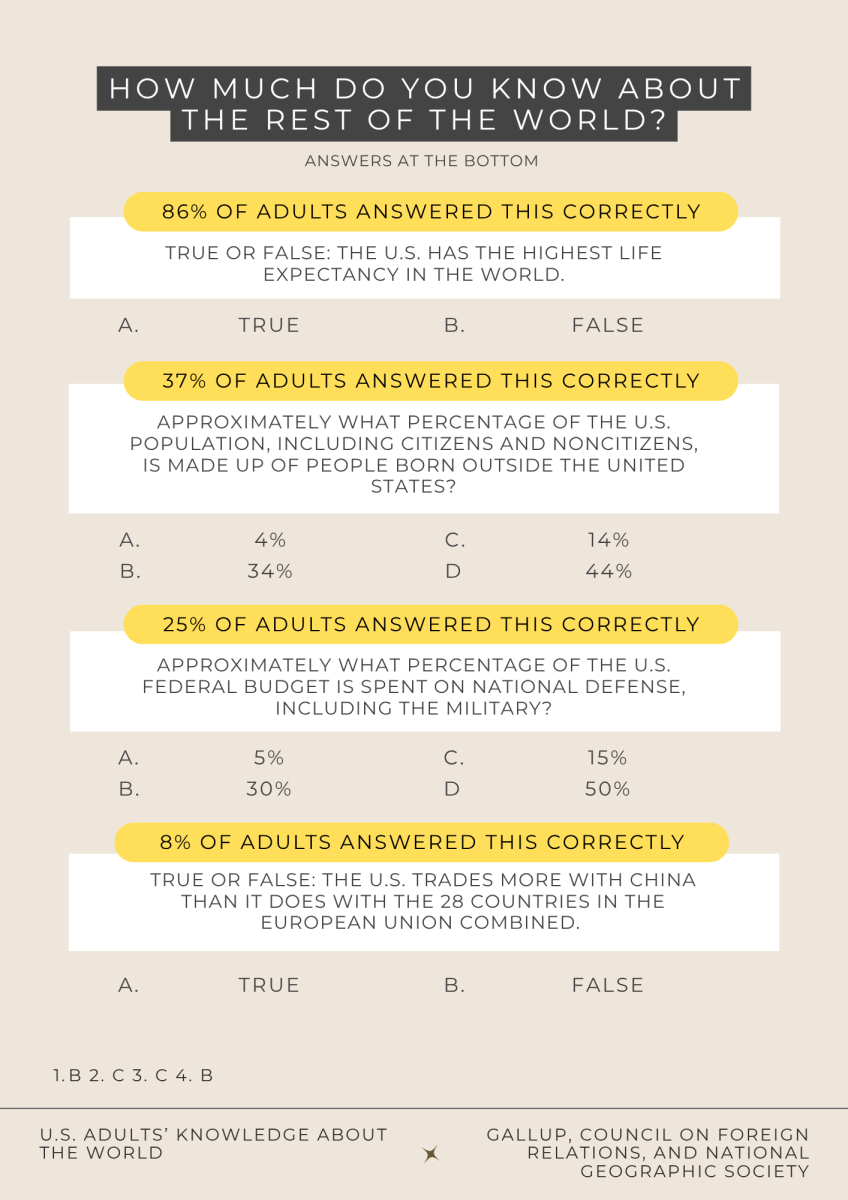Nearly 75% of high school graduates who were above grade level in reading proficiency in third grade attended college, per a University of Chicago study. Sixty percent of those below grade level did not.
Literacy proficiency in third grade has a proven link to future academic – and general – success for students, yet some student groups are at a severe disadvantage in this aspect, namely Multilingual Learners (MLs).
Only 33% of FCPS’ Multilingual Learners passed the third grade reading SOL this past school year according to FCPS. That’s about 10% worse than the district’s two other most vulnerable student groups for English: economically disadvantaged students and Hispanic students. To make matters worse, the Virginia Department of Education (VDOE) adopted a new accreditation system in August that would reduce the time given to English Language Learners (ELLs) before being tested for English proficiency. ELLs now are exempt from reading standardized tests for a maximum of three semesters, compared to the 11 semesters they were given before.
Although these recent policy changes have made it harder for MLs to develop literacy skills, FCPS’ new testing initiative could prove key in developing their English proficiency. The Northwest Evaluation Association (NWEA) Measures of Academic Progress (MAP) Growth test, which will replace the Reading Inventory and Math Inventory, is a new test introduced countywide. It will be taken three times by freshmen, juniors and seniors each school year, allowing teachers to track student progress in real time.
Compared to its predecessor, the MAP test provides a much more detailed analysis of its test takers’ strengths and weaknesses, for example, the data from the reading test points to which categories (literary text, informational text and/or vocabulary) the student is proficient or struggling in.
FCPS introduced this test to provide a better understanding of students’ skills and areas for improvement to teachers, but it’ll do the best for the county’s most vulnerable student group, MLs. While FCPS already spends $141.7 million on ESOL (English for Speakers of Other Languages) programs according to the FY 2024 budget, and has continued to increase spending in the last few years, reading scores continue to either stall or decrease. This new data can potentially help struggling ESOL teachers instruct their students on a more individual level and based on their specific needs.
For example, in order to capitalize on this new data, CHS introduced homeroom periods for students that struggled in English classes, on SOLs and on the MAP test. The school has also announced new literacy support courses for the 2025-26 school year. While neither of these two initiatives focus specifically on ML students, these classes will focus on the deficiencies shown in the MAP Growth test data as well as the SOL’s to help students improve their literacy. However, these classes will be electives rather than mandatory periods—students, struggling or not, will choose whether they want an extra course’s worth of help.
According to FCPS, 21% of the county’s students are MLs, who are the fastest-growing student group in the country per the National Center for Education Statistics. It’s crucial that the district shifts its resources to help all students succeed. Although MAP testing offers hope by providing more data, its effectiveness is reliant on how well FCPS can use this information to address literacy gaps across all student groups.









